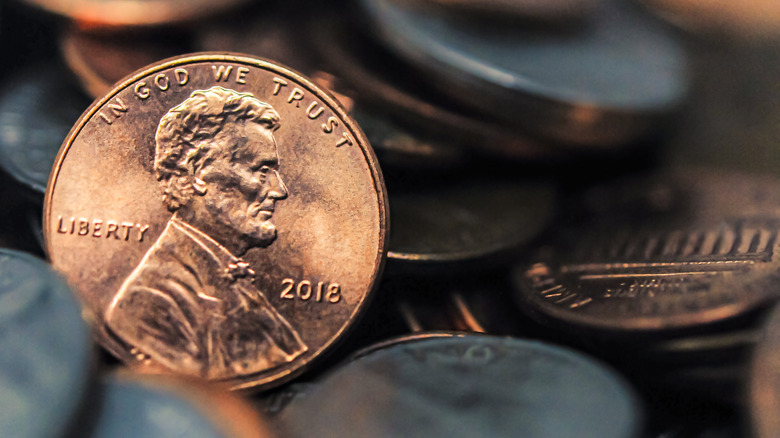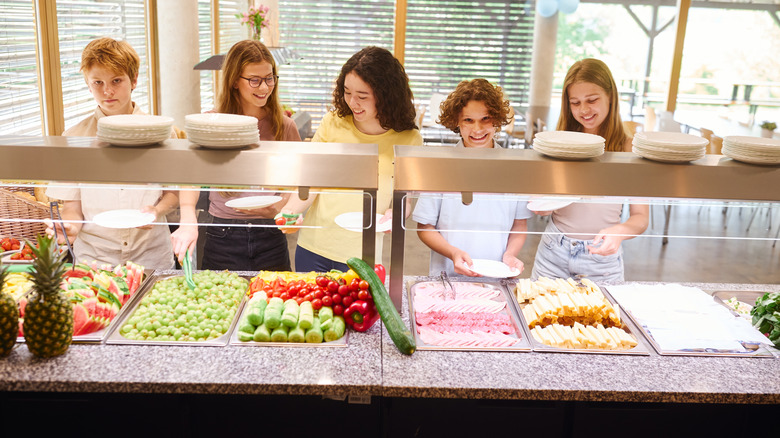How Penny Restaurants Gave A Generation Of Diners Respect During The Great Depression
If you've studied the Great Depression in school, you may have read about bank runs, unemployment, and even the vast numbers of people who left their homes looking for work. But one thing you may not have learned much about is the Great Depression's restaurant culture. After all, with times so hard, people would have struggled to afford going out to restaurants, right? Well, while conventional and high-end restaurants did struggle to stay open, a new breed of extremely inexpensive restaurants were born, to give people an affordable way to get a hot meal without the stigma of standing in the bread lines: the so-called "penny restaurants."
Penny restaurants, as the name suggests, sold food items for only a penny each, meaning that a diner looking for a meal of, say, bean soup, a roll, and a cup of coffee would pay only three cents. Many also had a policy that those who couldn't pay, ate free. Food offered at penny restaurants was typically simple fare; while you might not find Hoover stew, or a water pie, or a couple of slugburgers on the menu (to name just a few Depression-era dishes), you could expect soups, stews, baked potatoes, and stewed fruit. The idea was to feed those in need, while still offering the dignity of a restaurant experience.
What happened to the penny restaurants?
When the Depression ended, where did the penny restaurants go? Well, some of them are actually still around. Clifton's cafeterias started as penny restaurants owned by Clifford Clinton, the philanthropic son of a wealthy California family who already owned several restaurants when the Depression hit. The original Cliftons' were pay-what-you-can, with the slogan "dine free unless delighted," but while diners today will need to bring their wallets, they can still enjoy a meal at the Los Angeles spot, now a high-end event space and eatery known as Clifton's Republic.
While other penny restaurants, such as the New York outlets owned by fitness pioneer Bernarr Macfadden, didn't last long, they did leave a lasting legacy. By operating as restaurants rather than soup kitchens, even while offering free or nominally priced meals, they provided a dignified option for those too proud to stand in a breadline, and allowed customers the respect of choosing their own meals from a menu. Today, not-for-profit and charitable restaurants, like the ones across New Jersey owned by Jon Bon Jovi, continue the warm-hearted penny restaurant tradition.

